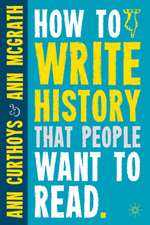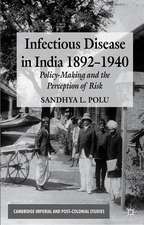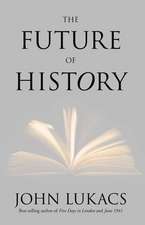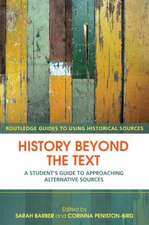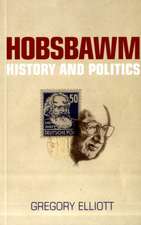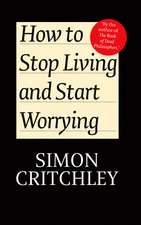Using Computers in History: A Practical Guide to Data Presentation, Analysis and the Internet
Autor M. J. Lewis, Roger Lloyd-Jonesen Limba Engleză Paperback – 23 mai 1996
Using Computers in History:
* raises awareness of the use of computers as an important tool for the historian
* provides a practical introduction to basic computer terminology
* includes high quality diagrams of the screen displays which should appear at each stage
* examines the use of spreadsheets and how to design and work with them
* discusses the different software packages available, concentrating on Microsoft Excel 4
* includes spreadsheet exercises based around a range of historical data sets
* explores the use of databases
* shows how to construct them
* gives guidelines for further study
* prompts students to apply the skills they have learnt to a number of examples
Preț: 417.36 lei
Nou
Puncte Express: 626
Preț estimativ în valută:
79.90€ • 82.22$ • 67.35£
79.90€ • 82.22$ • 67.35£
Carte tipărită la comandă
Livrare economică 01-15 martie
Preluare comenzi: 021 569.72.76
Specificații
ISBN-13: 9780415103121
ISBN-10: 0415103126
Pagini: 264
Ilustrații: 180 tables
Dimensiuni: 174 x 246 x 18 mm
Greutate: 0.48 kg
Ediția:1
Editura: Taylor & Francis
Colecția Routledge
Locul publicării:Oxford, United Kingdom
ISBN-10: 0415103126
Pagini: 264
Ilustrații: 180 tables
Dimensiuni: 174 x 246 x 18 mm
Greutate: 0.48 kg
Ediția:1
Editura: Taylor & Francis
Colecția Routledge
Locul publicării:Oxford, United Kingdom
Public țintă
AS/A2, Postgraduate, Professional, and UndergraduateRecenzii
'Routledge have published a wizard guide, beautifully produced, with a wealth of illustrations (over 120 figures and 20 tables)... leader of the pack - by several lengths.' - - Gilbert Pleuger, New Perspective
'This book is essential reading for anyone about to study history at university, since nearly all courses now include an element of computing. Basically, what it does is to explain, very clearly, how to use spreadsheets and databases for historical analysis. It provides a series of exercises to develop your understanding, and the data needed to carry them out. The best thing is it assumes very little knowledge of computers to begin with - terms and techniques are explained throughout ... An extremely worthwhile book which will repay careful study by teachers and pupils alike.' - History Review
'This is a history text, not just a computing text with token history. Just as spreadsheets and databases requires historians to think carefully about sources, using word processors affords an opportunity to think about how historians write and to teach history students to think about the writing of history' - Times Higher Education Supplement
'A well-informed guide to using computers in history.' - History Teaching Review (SATH)
'This book is essential reading for anyone about to study history at university, since nearly all courses now include an element of computing. Basically, what it does is to explain, very clearly, how to use spreadsheets and databases for historical analysis. It provides a series of exercises to develop your understanding, and the data needed to carry them out. The best thing is it assumes very little knowledge of computers to begin with - terms and techniques are explained throughout ... An extremely worthwhile book which will repay careful study by teachers and pupils alike.' - History Review
'This is a history text, not just a computing text with token history. Just as spreadsheets and databases requires historians to think carefully about sources, using word processors affords an opportunity to think about how historians write and to teach history students to think about the writing of history' - Times Higher Education Supplement
'A well-informed guide to using computers in history.' - History Teaching Review (SATH)
Cuprins
Section 1: Introduction 1. How to Use this Book and Getting Started 2. Introduction to History and Computing Section 2: Spreadsheets and Graphs 3. Spreadsheets, Graphs and the Historian 4. Presenting Historical Data with a Spreadsheet 5. Presentation of Historical Information: Graphs 6. The Historian and Data: The Material Conditions of the Working-Class in Britain 1850-1914 7. Spreadsheets and Graphs: The Historian and Data Section 3: Databases 8. Databases and the Historian 9. Getting Started with a Database 10. Databases and Independent Study
Notă biografică
Roger Lloyd-Jones is Reader in Economic and Business History, also at Sheffield Hallam University. The authors have run a course on history and computing at the university for several years., Senior Lecturer in Business History and History and Computing at Sheffield Hallam University.
Descriere
Lloyd-Jones and Lewis explain and illustrate the possible uses of the computer for the historian. Using practical workshop sessions, basic skill and knowledge development exercises and theory, this will be an important tool for the historian.



